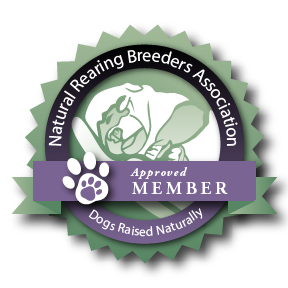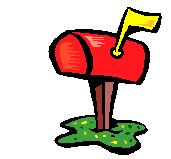Chapter 15
Table Scraps as Dog Food
Most vets advise against feeding table scraps to dogs. They also add that if table scraps are fed, they should comprise no more than twenty five percent of the dog’s total food intake. This is based on the assumption that the bulk of the diet is commercial dog food.
- If you do feed mostly commercial dog food, then your vet’s advice is sound. Those artificial commercial dog food diets are very fragile. That is, very easily unbalanced. The more table scraps that are added to them, the more unbalanced they become, resulting in increasing health problems for your dog.
What is Wrong with Feeding Table Scraps Only?
Table scraps mostly consist of two food groups… fat and carbohydrates. That is, meat trimmings, which means fat, and vegetables, which are carbohydrates. Commonly, gravy is present, which is fat and carbohydrate also.
A major characteristic of fatty table scraps is their incredible palatability. Many dogs become addicted to such food… refusing to eat anything else. In fact, as they become more obese, and more unhealthy due to such an unbalanced diet, they even more stubbornly refuse all other food.
- Dogs fed continuously on such a diet will suffer severe malnutrition in the form of a deficiency of protein, minerals, often the essential fatty acids, and vitamins.
Such a diet would rapidly cause stunting, growth and bone problems in a growing pup, and in an adult dog will cause obesity to start with, but has the potential to produce just about every conceivable health problem a dog could possibly develop. This includes cancer and other degenerative diseases, including diseases of the pancreas, particularly Pancreatitis. Other organs that will suffer include the liver, the heart and possibly the kidneys.
I am talking here about a situation where people feed the fat trimmings to their dog to total excess. A few are OK with other foods. please also note at this point that if your hard working dog is fed lots of fat to give it extra energy, do feed extra vitamin E.
Balancing Table Scraps
Your vet is very happy for you to feed table scraps to your dog so long as you know how to balance them using readily available healthy foods.
- Just remember, you cannot balance table scraps by using commercially produced dog food, because as I have said, it is an artificial food, so it’s balance is delicate and easily upset.
If we go back thirty or forty years, most dogs were fed on the family's left overs together with bones and scraps of meat from the butcher. If you listen to people who can remember back that far, they will tell you how dogs fed that way did very well. Those dogs had no need of vets. Mind you, that was fortunate, because vets were hard to find in those days.
The good news is, our dogs have not changed. It’s only been a few decades. We can still go back to that style of feeding, but we can now do it with much more nutritional knowledge.
Of course in some instances the scraps might have changed. It is likely that today’s scraps will contain a high proportion of unwholesome fast junk food.
- The best way to approach our table scraps or left overs, is to make a quick assessment of what they mainly consist of, and see what else we need to feed our dog in order to give it a balanced diet, keeping in mind that balance does not have to be, and indeed should not be achieved at every meal.
Let us return to that worst scenario. The feeding of dogs on table scraps consisting mosthly of fatty trimmings, gravy and carbohydrate rich vegetables.
By feeding your dog such food, - cooked – mostly what you have supplied is energy. Your dog misses out on all the nutrients only available from raw food such as enzymes and anti-oxidants etc.. It also lacks adequate protein, possibly essential fatty acids, and there will not be enough minerals and vitamins.
Raw Meaty Bones to the Rescue !
The bulk of those deficiencies can be remedied with one cheap easily available product. The raw meaty bone. Bones are the perfect mineral source for your dog. Raw meaty bones fill in most of the other gaps as well ! That is, they supply proteins, the essential fatty acids, many of the nutrients only available from raw foods, and some of the fat soluble vitamins. Add some green leafy vegetables, organ meats, brewer’s yeast, eggs etc. and hey presto, the diet is balanced. It really is that simple.
Another way, apart from raw bones, to get calcium and other minerals into your dog is to feed dairy foods, and legumes. However, I strongly advise you not to rely on these products to supply your dog’s mineral requirements. Stick to the raw meaty bone, they are cheaper, and do a far better job.
You do not have to feed the bones and the scraps at the same sitting. In fact I would strongly advise against the practice. Most table scraps will be more available at night after the main meal of the day. Feed them then. Throw in some brewers yeast (the B vitamins) and a kelp tablet (iodine), and you are done.
Give your dog it’s meaty bones in the morning. That should keep it occupied all day.
You can vary all this of course. Suppose the bones your dog had one morning were not very meaty, and the only scraps that night was a bit of left over rice. In that case, you might add some baked beans or throw in a couple of eggs and perhaps some pulverised vegetable scraps and a small amount of vegetable oil, etc..
If using table scraps consisting mostly of grain products and vegetable left overs, and the only bones being used are beef or lamb, you may need to add one of the vegatable oils to the scraps to make sure there are sufficient essential fatty acids present.
Do Not Feed too Much Cooked Food
When including table scraps as part of your dog’s diet, it is important to guard against feeding mostly cooked food. Naturally the bones you feed will be raw, but do ensure that the rest of the diet consists of at the very least, fifty percent raw foods.
One way to do this is to use the vegetable peelings. They actually contain more food value than the inside bits. Wash them well to remove any toxic chemicals before peeling them, and then put them through the juicer or the blender etc., to reduce them to pulp before feeding them to your dog.
If you wish to feed your dog a totally natural diet, feeding cooked table scraps is out. Feed the raw ones only. I assume they will be mostly vegetable matter. If that is the case, see the section of feeding vegetables to your dog. Apart from that, the advice is no different. Base the diet on raw meaty bones and add eggs, oils, kelp and brewer’s yeast etc..
Conclusion
Basically, no matter what the scraps are, so long as they are supplemented with plenty of RAW MEATY BONES… you cannot go too far wrong. Just keep in mind that dogs eat everything, and that the best way to ensure balance is to feed a wide variety of other foods, particularly raw foods.
You can Help our Planet
Also keep in mind, that when you use your table scraps, vegetable peelings etc. to feed the dog, rather than throwing them out with the garbage, you are doing something to save money and conserve energy. By feeding table scraps to the dog we are recycling otherwise useless food.
If we multiply the savings make by one household feeding left overs to their dog(s), by all the dog owning families potentially able to do this, we can see the possiblility of making an incredible saving of the energy reserves of our over-populated, under-resourced planet.
This capter should be read in conjunction with chapter 18 if you are feeding an adult dog, chapter 17 if feeding a puppy, or chapter 22 if feeding an older dog.




